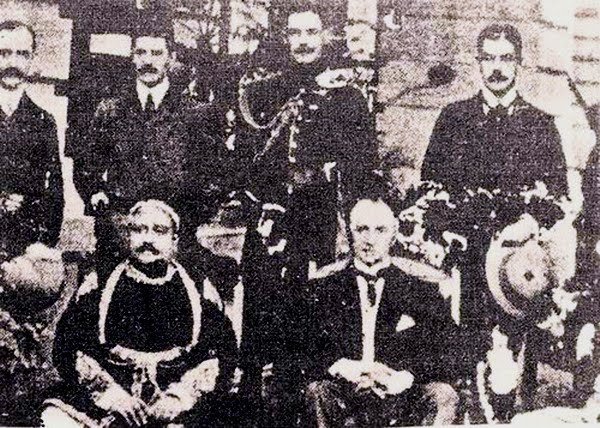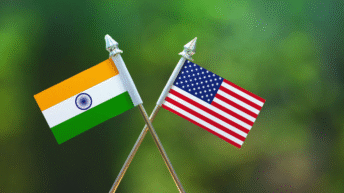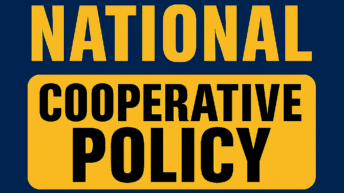|
Listen to article
Getting your Trinity Audio player ready...
|

The British had attempted their first partition of India four decades earlier in 1905. They decided to partition the Bengal province into two. The capital of British India, until 1911, was in Calcutta (today’s Kolkata) in the Bengal province. Bengal was the largest province in British India with over 80 million population in those days, almost 1/5th of the population of the entire country. Bengal was also home to a strong resistance movement against colonial rule. A large number of revolutionaries in India’s freedom movement came from Bengal. A strong Congress movement too flourished in the province. Poets, littérateurs, academics, and journalists – Bengal was home to many eminences who were at the forefront of the struggle against the British.
Lord Curzon, who was the British Viceroy of India when Bengal was partitioned, argued that it was only an administrative measure. But his own colleagues like Henry Cotton, the then Chief Commissioner of Assam, who was opposed to this move, openly stated that the act was intended to weaken the nationalist movement in the region.
The British then decided to tackle this fledgling anti-Colonial movement in a different way. They partitioned the province of Bengal into two – East Bengal with Dhaka as the capital, that included Assam, and West Bengal with Kolkata as the capital that included Bihar and Orissa. Lord Curzon, who was the British Viceroy of India when Bengal was partitioned, argued that it was only an administrative measure. But his own colleagues like Henry Cotton, the then Chief Commissioner of Assam, who was opposed to this move, openly stated that the act was intended to weaken the nationalist movement in the region. “There were no administrative reasons. Curzon’s plan was to oppress the rising force of a nationalist political movement”, Henry Cotton later wrote.
The Congress leadership and the revolutionaries sensed the British mischief behind this decision. Through this policy of divide et impera – Divide and Rule, the British had planned to secure two objectives. They wanted to weaken the freedom movement and also in the process sow seeds of mistrust and conflict between Hindus and Muslims. The partitioned East Bengal was to become almost 60% Muslim, while the residual West Bengal was to be 80% Hindu. The leaders of the independence movement decided to firmly reject London’s ploy.
Curzon travelled across the length and breadth of the province. Everywhere he encountered popular resistance to his move. Even the Muslims, including the brother of the Nawab of Dhaka, Khwaja Atiquallah, were opposing Bengal’s partition. But Curzon was adamant. He insisted that the partition of Bengal was a “settled fact”. October 16, 1905 was declared as the day of the partition.
People were furious. Agitations, protests, lockdowns, speeches, writings and posters started dominating the province. On the appointed day of the partition, a massive protest rally was organised at Barisal town in the then South Central Bengal, now in Bangladesh. Over fifty thousand people joined the protests. The slogan ‘Vande Mataram’, from the song authored by Bankim Chandra Chattopadhyay, a Bengali scholar in his novel Anand Math, reverberated in the air. Gurudev Robindronath Tagore was present to administer an oath to the people for the reunification of Bengal. At another big meeting in Kolkata on August 7, 1905 a resolution was passed calling for the boycott of British products so long as the ‘Partition Resolution was not withdrawn’. Thus was born the famous ‘Swadeshi Movement’.
Bengal became united again, unsettling Curzon’s and his successor Viceroy Lord Minto’s ‘settled fact’.
The agitation against the partition of Bengal had soon spread to the whole country. The Congress was in the forefront. Swaraj and Swadeshi became the twin mantras of the movement. It became popular as the Vande Mataram Movement or the Swadeshi Movement. Nationwide resistance was led by the trio popularly known as Lal-Bal-Pal – Lala Lajpat Rai in Punjab, Bal Gangadhar Tilak in Maharashtra, and Bipin Chandra Pal in Bengal.
The agitation intensified forcing the British Parliament to take cognisance. Finally, the British emperor, King George V had to rush to India in December 1911 and declare the annulment of Bengal’s partition. Bengal became united again, unsettling Curzon’s and his successor Viceroy Lord Minto’s ‘settled fact’. It was a great victory for the nationalist forces led by the Congress although a large section of the Muslims of Bengal was thoroughly disheartened.
A massive 6-year nation-wide agitation was launched when just one Indian province of Bengal was partitioned and the British were forced to annul it. Fast forward four decades. The entire country, including Bengal, was partitioned and the same nation remained a mute witness.
The resistance movement and its subsequent victory signified a major shift in the policies and programs of the Congress, which until then had been a political body limited to filing complaints and petitions before the British administration. The Vande Mataram movement had given the hardliners, led by Tilak, an upper hand in the Congress. The latter had now transformed into a vehicle of popular resistance through public agitations. Tilak’s historic exhortation – ‘Freedom is my Birth Right’ – became the new mantra of Indian politics.
That was 1905. A massive 6-year nation-wide agitation was launched when just one Indian province of Bengal was partitioned and the British were forced to annul it. Fast forward four decades. The entire country, including Bengal, was partitioned and the same nation remained a mute witness. Why?
It is a tragic and revealing history, spanning the period between 1911 and 1947, which holds many startling facts and staggering lessons for India.
The answer lies in the history of the freedom movement during those fateful four decades. It is a tragic and revealing history, spanning the period between 1911 and 1947, which holds many startling facts and staggering lessons for India. What happened during those years must be revisited to understand those facts and learn from them.
* * *
One of the critical fallouts of the partition of Bengal was a meeting held at Dacca (Today’s Dhaka) on December 27-31, 1906. Ishrat Manzil, a well-known Nawab family mansion, was hosting the annual meeting of the All India Muhammadan Educational Conference. The Nawab of Dhaka, Khwaja Salimullah was playing host to over 3000 delegates who came from all over the country. Nawab Salimullah presented a proposal at the conference on December 30 for establishing a political party to safeguard the interests of the Muslims of British India.
Thus was born the All India Muslim League with the objective of creating loyal Muslims to the British Raj and to advance the political rights of the community.
Thus was born the All India Muslim League, headquartered in Lucknow. Renowned Iranian Shia princely cleric, Sir Muhammad Aga Khan, hereditary Imam of the Ismaili sect was elected as its first president. The objectives of the Muslim League were to create loyal Muslims to the British Raj and to advance the political rights of the community.
On the horizon of the Indian political firmament, a new player had emerged, with the tacit blessing of the Viceroy Lord Minto. This new player would change the course of India’s independence movement in the next four decades substantively.






History of British India with birth of Muslim League sawing the communal seed is well presented
The narration in this part of Partition-II tells: People should not forget history and learn lessons from it. Whereas history often says: people don’t.
In depth clarity on historical perspectives specially on British sowing ‘political-venomous seed of divide & rule’ in last four decade of freedom movement was planned. The underestimation of Colonial & pro colonial Congress might be in shocks of ‘5th August’s ’ will change Bharath for development.
‘Divide and Rule Policy’ by the British not only the state boundaries but also religious community (Muslim League) and later on caste (Mandal Commission). Congress became a partner in the game and perpetuated it evening after partition.
भारत माता की जय
[…] Click to Read Part II […]
[…] <<Click to Read Part II […]